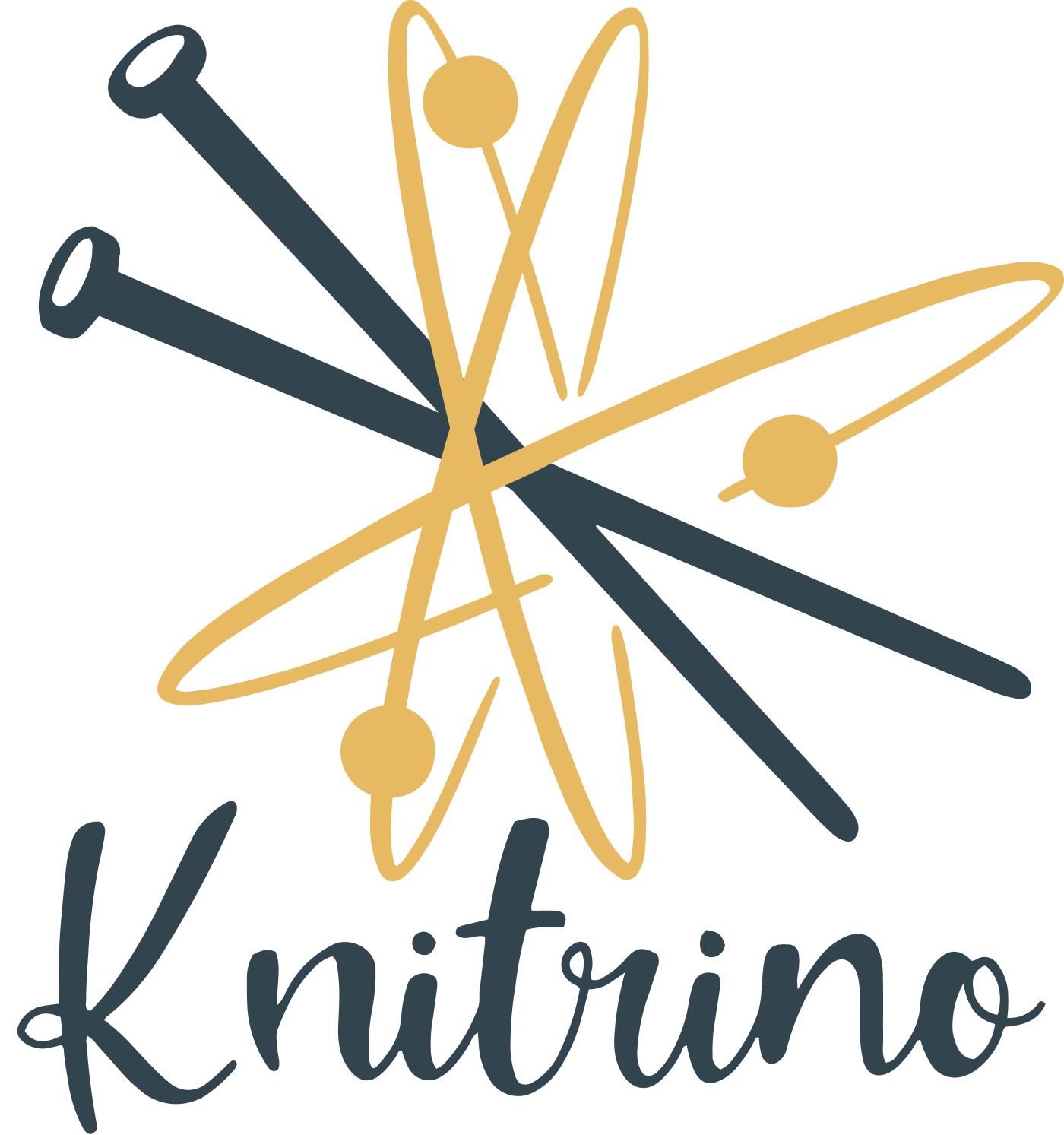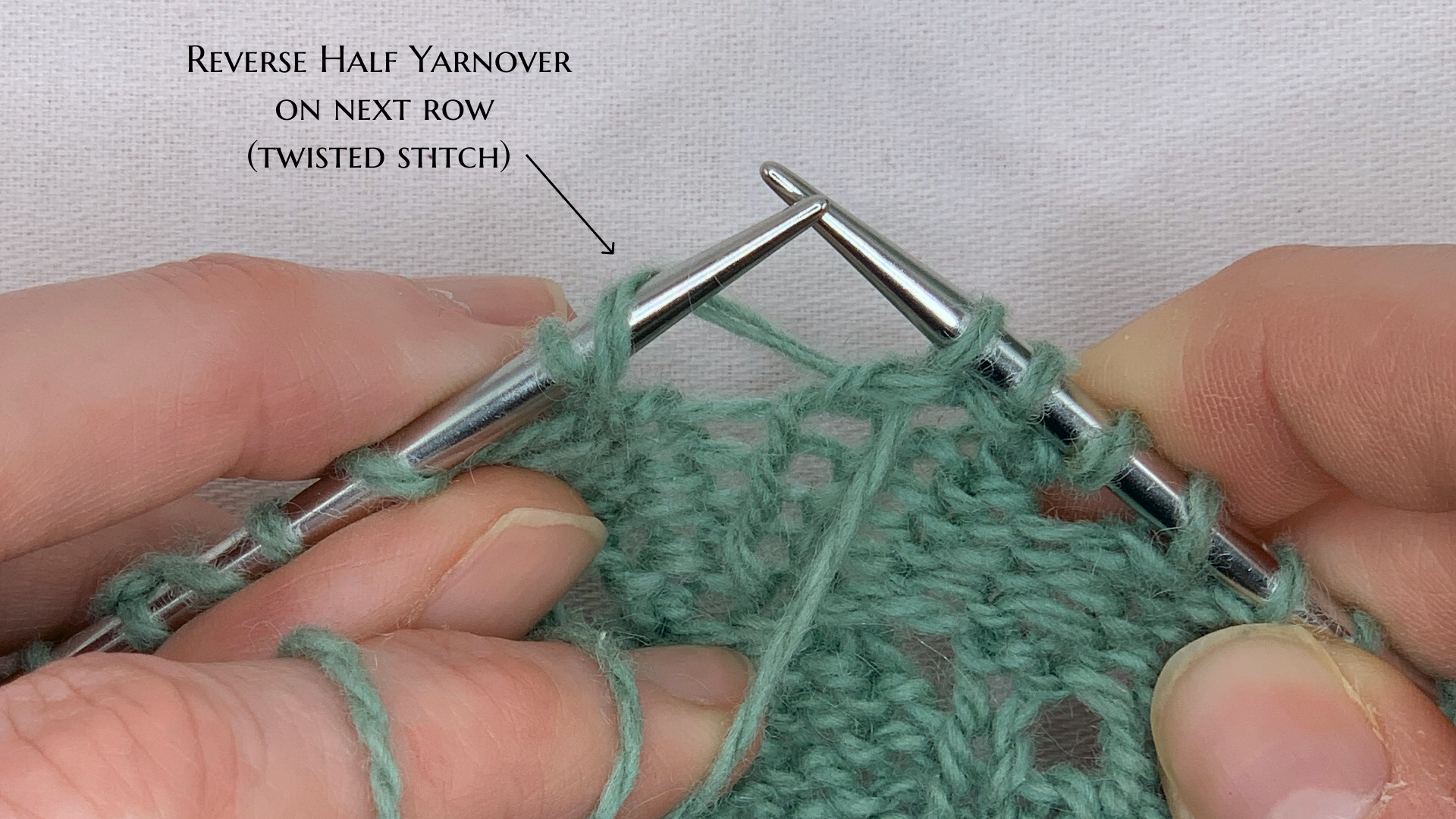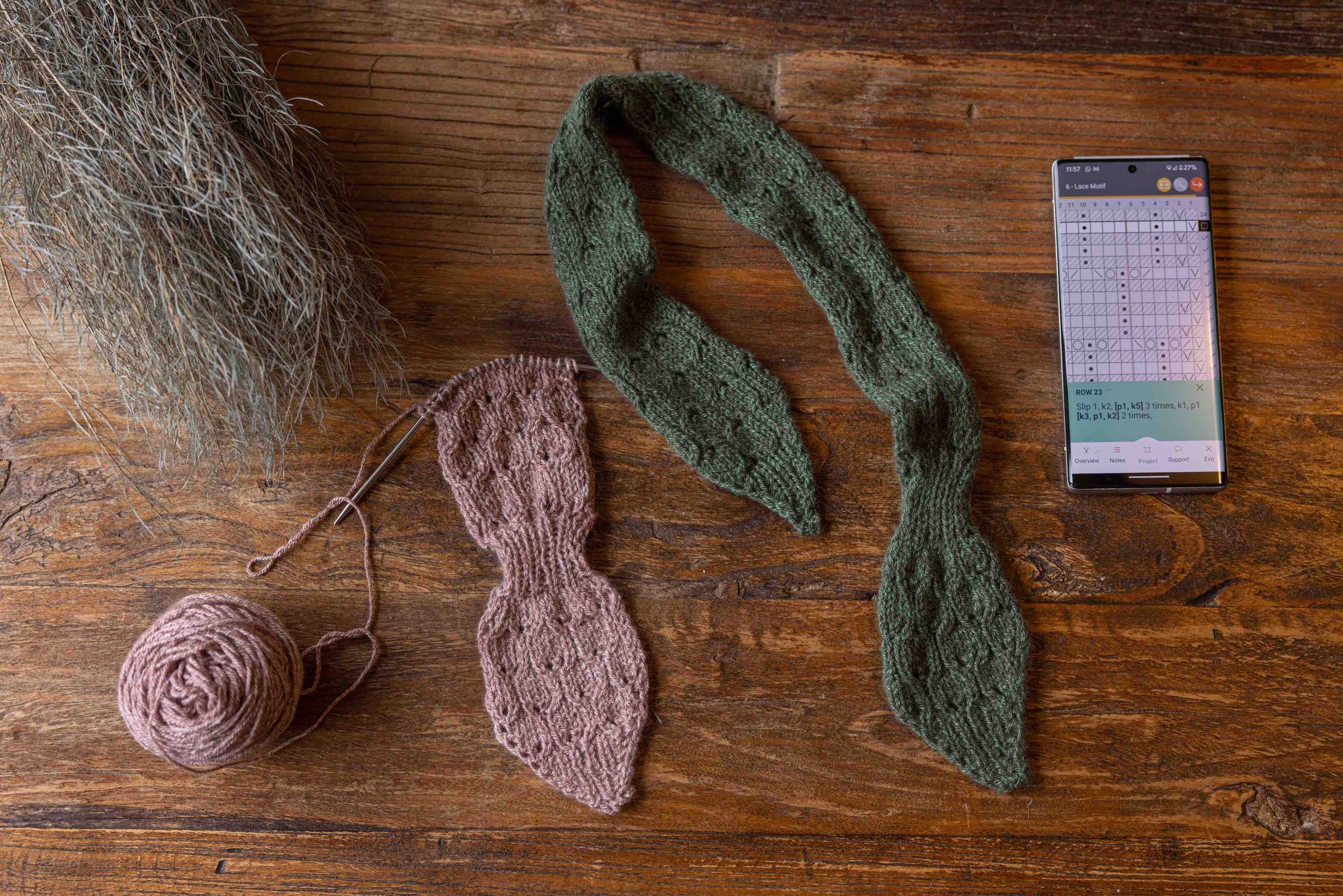Improving Your Lace: the Reverse Half Yarnover
Often, lace knitting is made up purely of yarnovers and knit-type stitches, where the yarn is held to the back for nearly all stitches. In this type of lace, a yarnover almost always starts behind the work and travels all the way around the needle, once again returning to the back of the work. However, lace can involve many other stitches, including purl-type stitches, where the stitch is worked with the yarn in front. In this type of lace, yarnovers require a little extra attention.
Traditional Yarnovers
Let’s say you have a lace row that is worked over 6 stitches:
[K1, k2tog, yarnover, purl, yarnover, ssk] repeat to the end.
If you were to carry the yarnovers around the needle in the normal direction, you’d end up with the first yarnover being much larger than the second. Why is that? Take a look at the images below. You’re carrying the yarn from behind the work all the way around the needle’s full circumference, and then bringing it forward to work the next purl stitch.
Looking at a cross section of the needle, we can see this clearly.
Looking at the second yarnover, we’re going from a purl stitch where the yarn is at the front of the work over the needle to the back of the work for the next knit-type stitch. In this case, the yarn only travels roughly half a needle circumference, and we refer to this as a Half Yarnover. Take a look at the images below.
A cross section shows this clearly.
Thus, the first yarnover will make an extra large hole in the lace, dwarfing its partner. You may have even seen this in your lace before and wondered what in the heck was going on. Take a look at the image below. The top lace section uses these traditional (super-sized) yarnovers for the first yarnover, then a purl stitch and the half yarnover from the purl to the next knit-style stitch. You can see how uneven these yarnovers look.
So how do we improve this? The goal is to make the length of the yarnover the same for both stitches, and the easiest way to do that is to mirror the half yarnover that occurs after the purl stitch. We call this the Reverse Half Yarnover. It’s a half yarnover because it’s covering half the circumference of the needle, and it’s “reverse” because we’re wrapping the yarn in the opposite direction, resulting in a twisted stitch that must be untwisted in the next row.
(A brief digression about names: we’re not sure anyone has good names for these, so you probably won’t see these names anywhere else in the knitting universe. But we like them because they describe the mechanics of what is happening, and differentiate between the different yarnovers.)
The Reverse Half Yarnover
How you think of the reverse half yarnover depends on your knitting style.
English Style: For those who knit English style, it’s pretty easy. You’ll just work your k2tog decrease, then insert your needle for the next purl stitch. When you bring your yarn over the working needle for the purl stitch, your reverse half yarnover is automagically created!
Continental Style: For those who knit Continental style, it’s just a little trickier. You’ll work your k2tog decrease, then bring your yarn over the top of the needle from back to front (it feels backwards when you’re doing it.) To purl, you’ll hold the yarnover in place with your finger, otherwise the yarnover will just slide off as you purl.
Working into Reverse Half Yarnover on The Next Row
As briefly mentioned above, the reverse half yarnover is a twisted stitch, meaning it’s sitting on the needle the wrong way around from all its friends. When you come to the stitch on the next row, this becomes quite obvious.
But never fear, it’s simple to resolve this stitch. You have two options:
(1) Turn it around before working it, and place it back on the holding needle.
(2) Work it through the back loop.
We generally suggest working through the back loop, as it’s not difficult once you know what to do, and it is fewer steps!
Ready to give it a try? Put it into practice with A Little Knotty! This small scarf has a clever faux knot that keeps it snug around your neck. It’s the perfect small project for an exquisite yarn in small quantities.
Knitrino works on iOS and Android devices so to get the pattern, open Knitrino or click the image or button from your phone.







